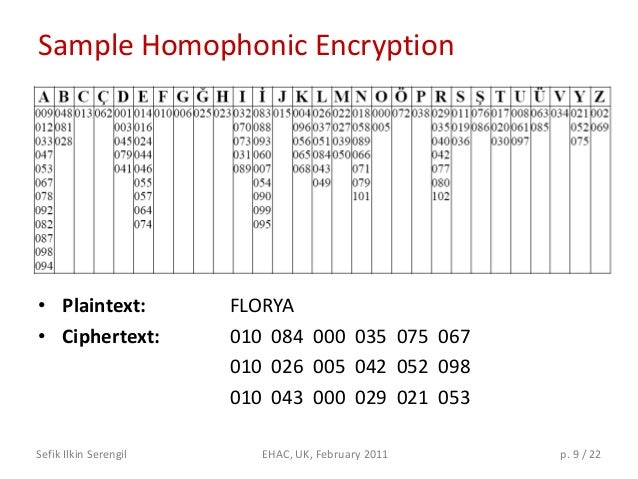Frequency Analysis’s First Contender
So far in cryptography history, substitution ciphers were vanquished by frequency analysis. However, a new cipher would rise, one that proved to be the first real challenge to frequency analysis: the homophonic cipher.
The homophonic cipher was similar to a substitution cipher, but instead of using one symbol to replace another symbol, there would be multiple options for a replacement and the sender could switch between them. Despite there being multiple replacements, the receiver could still easily decrypt the message, as each letter of the cipher alphabet only had one correspondent in the plain alphabet.

The image above shows an example of a homophonic key, with different 3 digit numbers as symbols in the ciphertext. It also shows a sample plaintext with various possible encryptions.
Plaintext letters could have any number of replacements, and the number of replacements was often determined by the frequency of the letter. This negated the effect of frequency in the ciphertext and thus made frequency analysis impossible.
However, this cipher was also cracked. Essentially, cryptoanalysts took advantage of the different behaviors of each letter, so to speak. For example, in English, Q, an uncommon letter, is always seen behind U, another uncommon letter. So if the cryptoanalyst sees 2 symbols consistently paired together, they can safely assume those symbols are Q and U. With enough of these patterns and simple filling in the blanks, the cipher can easily be cracked.